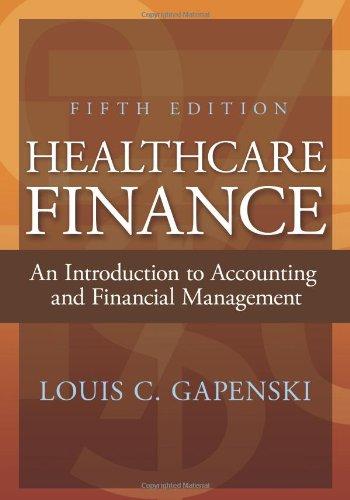I need a solution with eviews please

Question 1 The data represents a subset of the equity us.* data in order to focus on the 1987 stock market crash. The present value model predicts the following relationship between the share price P. and the dividend D: Pu= Bo + Bide + where u is a disturbance term. A rational bubblc occurs when the actual price persistently deviates from the present value price bo + bid The null and alternative hypotheses are H: Bubble (u is nonstationary) H: Cointegration (u is stationary). (a) Create the logarithms of real equity prices and real dividends and use unit root tests to determine the level of integration of the series. (b) Estimate a bivariate VAR with a constant and use the SIC lag length criteria to determine the optimal lag structure (e) Test for a bubble by performing a cointegration between pand dt with the number of lags based on the optimal lag length obtained from the estimated VAR. (d) Are United States equity prices driven solely by market fundamentals or do bubbles exist. Question 2 Using the data set PV.wfl answer the following questions: (10 pts) (a) Compute the percentage monthly return on equities and dividends and estimate a bivariate VAR for these variables with 6 lags. (b) Test for the optimum choice of lag length using the Hannan-Quinn criterion and specifying a maximum lag length of 12. If required, re-estimate the VAR. (c) Compute the impulse responses for 30 periods and interpret the results. (d) Compute the variance decomposition for 30 periods and interpret the results. Question 3 This question is based on the EViews file HEDGE.WF1 which contains daily data on the percentage returns of seven hedge fund indexes, from the 1st of April 2003 to the 28th of May 2010, a sample size of T = 1869. (10 pts) R.CONVERTIBLE : Convertible Arbitrage R.DISTRESSED Distressed Securities R_EQUITY Equity Hedge REVENT Event Driven R.MACRO Macro R.MERGER Merger Arbitrage R NEUTRAL Equity Market Neutral (a) Using the returns on the Merger hedge fund estimate the constant mean model R.MERGER: = y + and interpret the time series properties of u and us, where but is the demeaned return. (b) Compute the empirical distribution of ut. Perform a test of normality and interpret the result. (c) Test for ARCH of orders p= 1, 2, 5, 10, in the Merger hedge fund returns. (d) Repeat parts (a) and (b) for the other six hedge funds. (e) Using the returns on the Merger hedge fund estimate the GARCH(1,1) model R.MERGER = 70 + N (0,ht) ap + au 1 + Bih:-1 Sketch the news impact curve. Question 1 The data represents a subset of the equity us.* data in order to focus on the 1987 stock market crash. The present value model predicts the following relationship between the share price P. and the dividend D: Pu= Bo + Bide + where u is a disturbance term. A rational bubblc occurs when the actual price persistently deviates from the present value price bo + bid The null and alternative hypotheses are H: Bubble (u is nonstationary) H: Cointegration (u is stationary). (a) Create the logarithms of real equity prices and real dividends and use unit root tests to determine the level of integration of the series. (b) Estimate a bivariate VAR with a constant and use the SIC lag length criteria to determine the optimal lag structure (e) Test for a bubble by performing a cointegration between pand dt with the number of lags based on the optimal lag length obtained from the estimated VAR. (d) Are United States equity prices driven solely by market fundamentals or do bubbles exist. Question 2 Using the data set PV.wfl answer the following questions: (10 pts) (a) Compute the percentage monthly return on equities and dividends and estimate a bivariate VAR for these variables with 6 lags. (b) Test for the optimum choice of lag length using the Hannan-Quinn criterion and specifying a maximum lag length of 12. If required, re-estimate the VAR. (c) Compute the impulse responses for 30 periods and interpret the results. (d) Compute the variance decomposition for 30 periods and interpret the results. Question 3 This question is based on the EViews file HEDGE.WF1 which contains daily data on the percentage returns of seven hedge fund indexes, from the 1st of April 2003 to the 28th of May 2010, a sample size of T = 1869. (10 pts) R.CONVERTIBLE : Convertible Arbitrage R.DISTRESSED Distressed Securities R_EQUITY Equity Hedge REVENT Event Driven R.MACRO Macro R.MERGER Merger Arbitrage R NEUTRAL Equity Market Neutral (a) Using the returns on the Merger hedge fund estimate the constant mean model R.MERGER: = y + and interpret the time series properties of u and us, where but is the demeaned return. (b) Compute the empirical distribution of ut. Perform a test of normality and interpret the result. (c) Test for ARCH of orders p= 1, 2, 5, 10, in the Merger hedge fund returns. (d) Repeat parts (a) and (b) for the other six hedge funds. (e) Using the returns on the Merger hedge fund estimate the GARCH(1,1) model R.MERGER = 70 + N (0,ht) ap + au 1 + Bih:-1 Sketch the news impact curve









